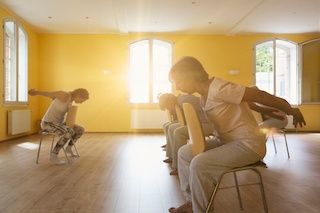If you have a fear of falling, you aren’t alone. This fear becomes increasingly more common as people age, even if they haven’t fallen themselves, and this fear can lead people to restrict their activities, usually unnecessarily.
The reality is that each year, more than one in three people aged 65 and older fall, with the Centers for Disease Control and Prevention pointing out that a person with multiple risk factors for falls is more likely to take a spill than people with just one or two. Falls can lead to significant injuries for about a third of the older adults who do fall, according to ScienceDirect.com, along with “intangible losses of mobility, confidence and functional independence.”
But it’s also true that there are simple ways to prevent most falls. Here are risk factors for falls, along with tips to prevent them from happening.
The National Institute on Aging shares common reasons why older adults fall. For one thing, reflexes probably aren’t as fast, and vision and hearing not as sharp. Medications can make you feel sleepy or dizzy, and diseases such as heart disease, diabetes, thyroid issues, nerve-related issues and more can impact balance.
If you have muscle weakness, you’re more likely to fall. The same is true if you have postural hypotension, which means your blood pressure falls when you get up from sitting or lying down. Foot problems can be a factor, as can gait challenges. If you’re confused, perhaps because of a new medication or because you wake up in an unfamiliar place, such as a hotel, you’re more likely to fall.
Fortunately, you can help to prevent falls, and one crucial way to do that is to take excellent care of your health overall. Participate in regular exercise, which strengthens your muscles, keeps tendons, ligaments and joints more flexible and slows down bone loss. Regularly get your vision and hearing checked, research side effects of medications and limit alcohol intake. Stand up slowly and deliberately, wear non-skid shoes that support your feet well, be especially careful when walking on wet or icy surfaces, and use canes and walkers, as needed.
Fall-Proof Your House
Aging.Ohio.gov provides a significant amount of information about how you can make your home more fall-proof, which includes moving furniture so that a clear pathway exists between rooms. Lighting is important, too, so put a lamp or other light source near your bed, plus a nightlight along the path between your bedroom and the bathroom. Cords, including those from lamps, can be hazardous, so keep them out of the walkway. Do not, however, put them under a rug as that also constitutes a fall hazard.
Put slip-resistant rugs in front of bathtubs and showers, and a rubber mat inside each tub (or use nonskid adhesive strips). Repair any places where carpet or floor boards are loose. Use a folding stepping-stool to reach higher-up items, including food, dishes and so forth.
Aging.Ohio.gov offers plenty more strategies to help fall-proof your house. The article also points out that, if you are a recipient of Medicare or Medicaid, you can talk to your doctor about an environmental falls assessment, along with the likelihood that you would qualify for one. They are typically conducted by a physical or occupational therapist. You can also consult with local agencies on aging about strategies and resources (here are aging agencies located in Ohio), along with senior centers and other relevant organizations.











